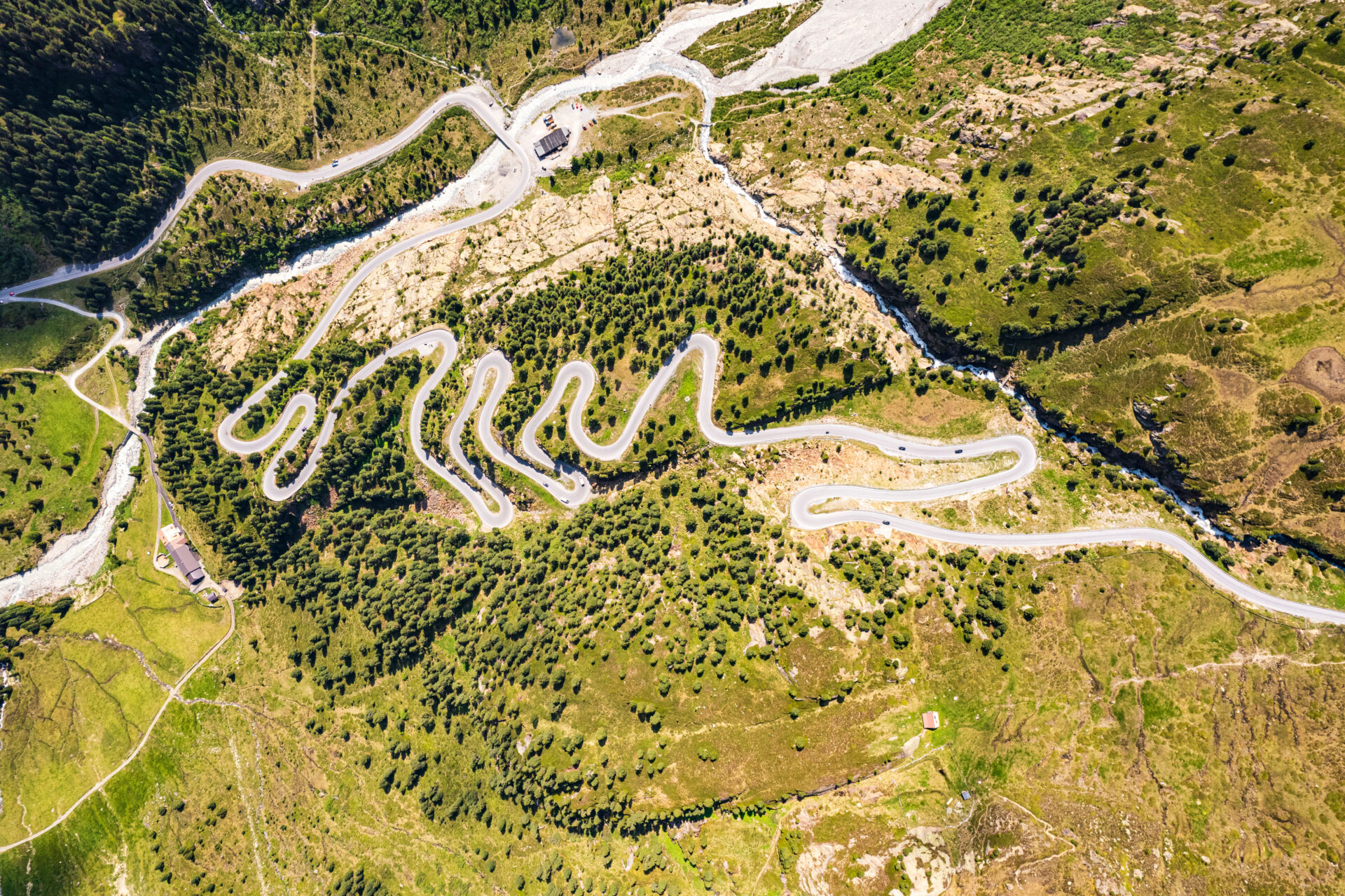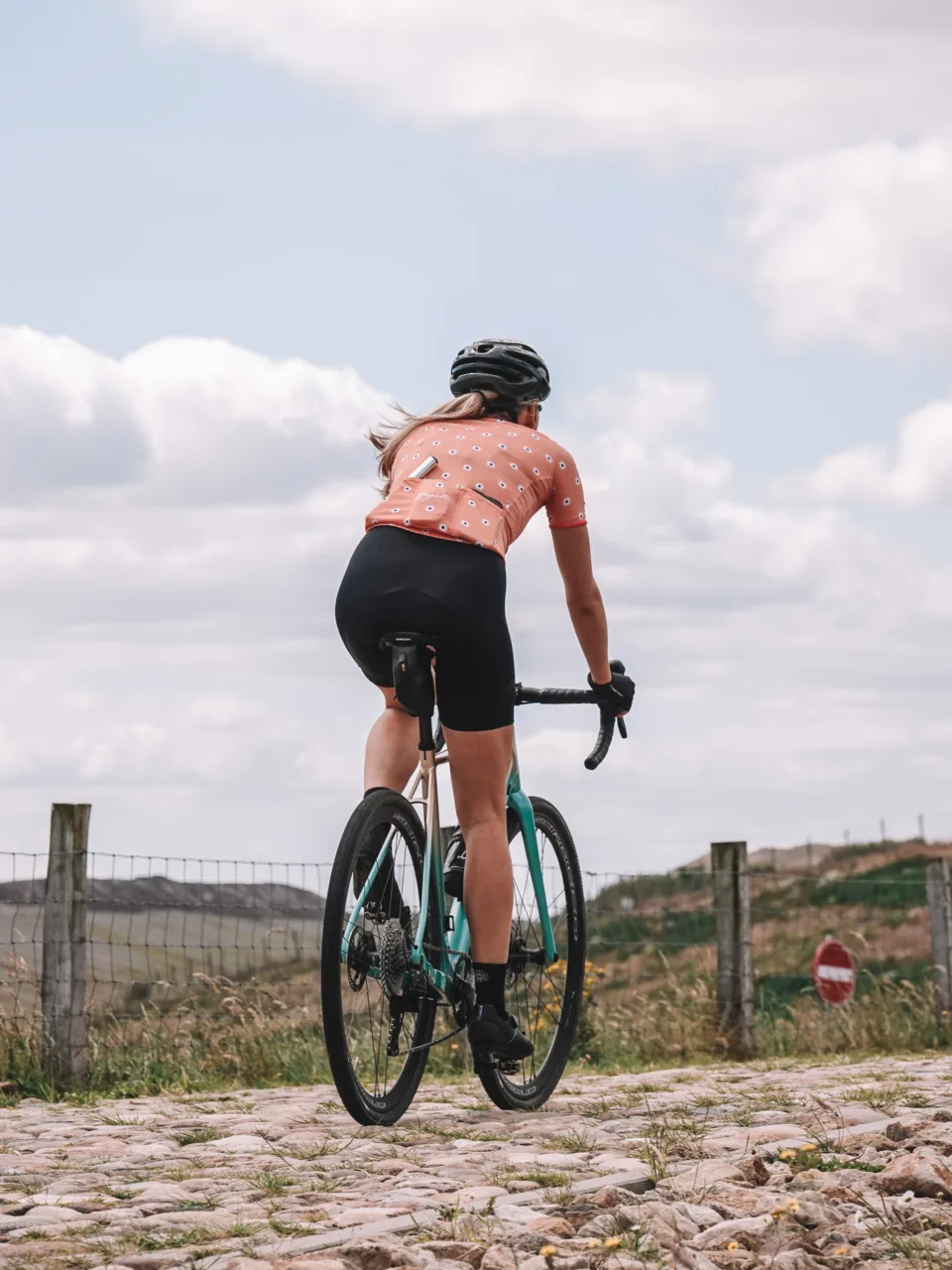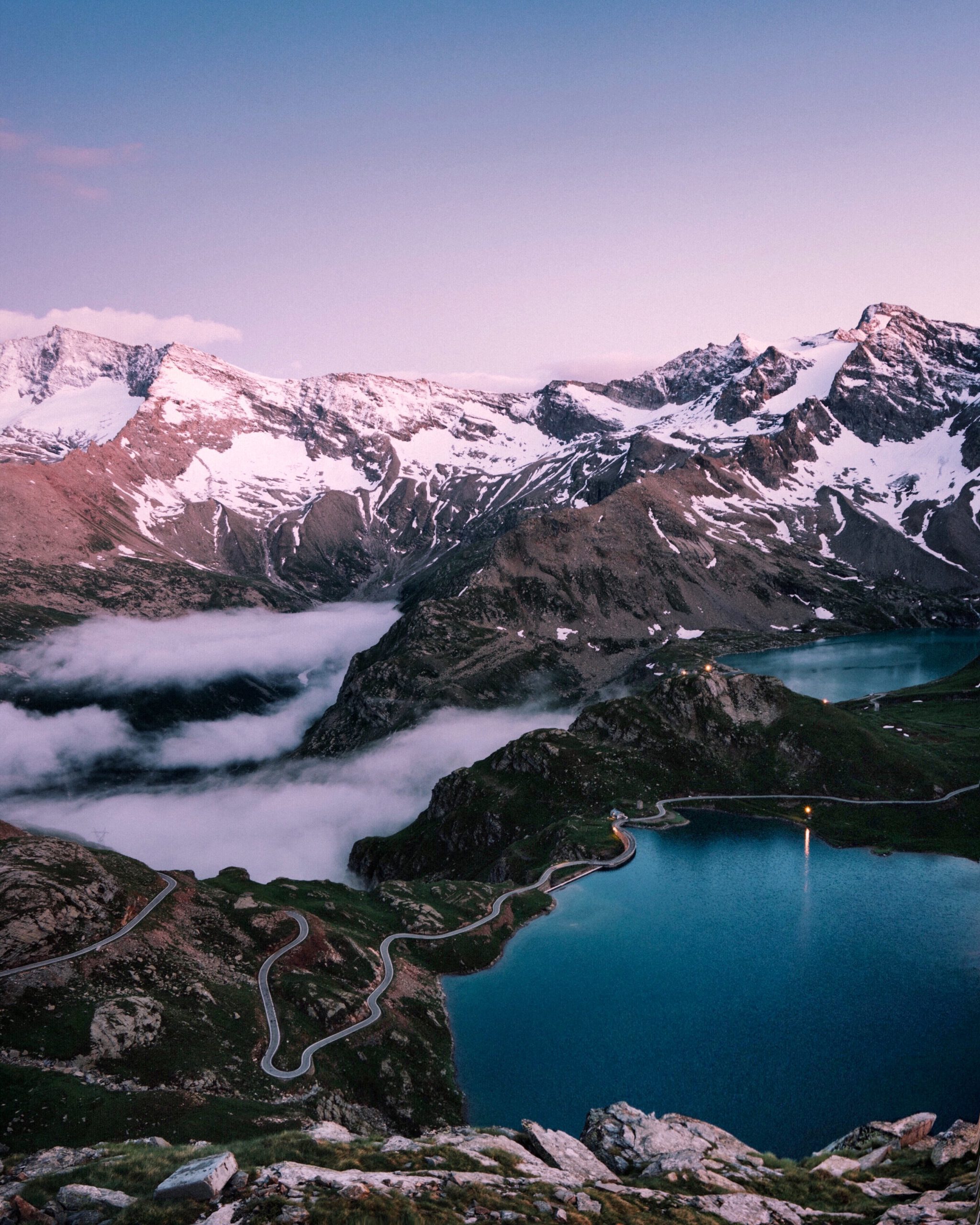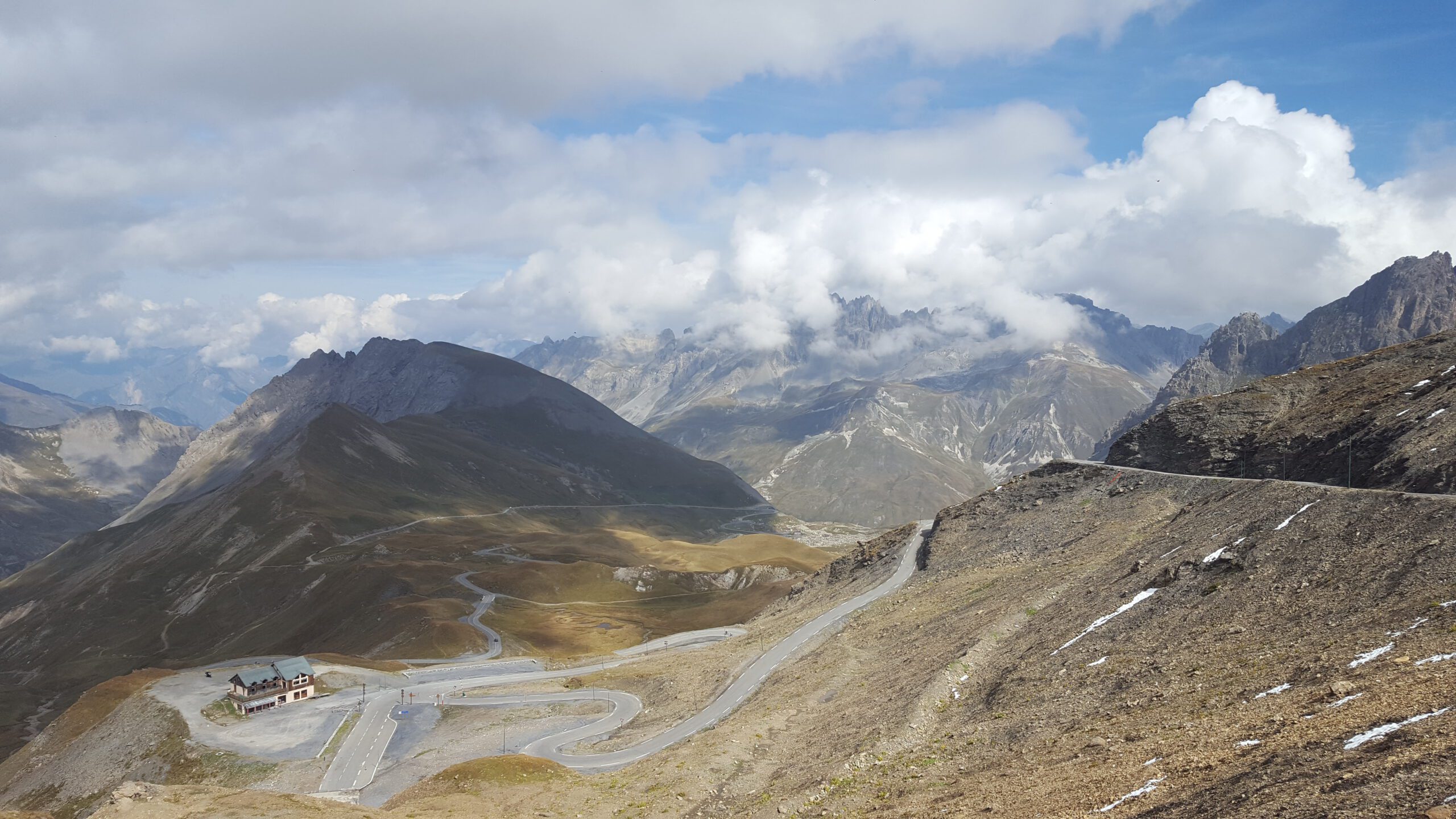'Roubaix-Eurotéléport' sounds from the metro's speakers. I look at Richard, a good friend, and we nod at each other. This is where we have to get out, for the last bit towards the hallowed ground. The ground of the Velodrome André Pétrieux. We take the stairs to the top and once there we have to swallow. The sun shines over the Boulevard du General Leclerc but it doesn't make us particularly happy. In just over six months, it will be grey and dreary. The people around us look a little frowny. Perhaps they are more likely to see two cycling tourists coming out of the metro here, but still. We stand out. Once on the bus, we hobble towards the terminus. Stop: Vélodrome. My heart rate goes up a little.
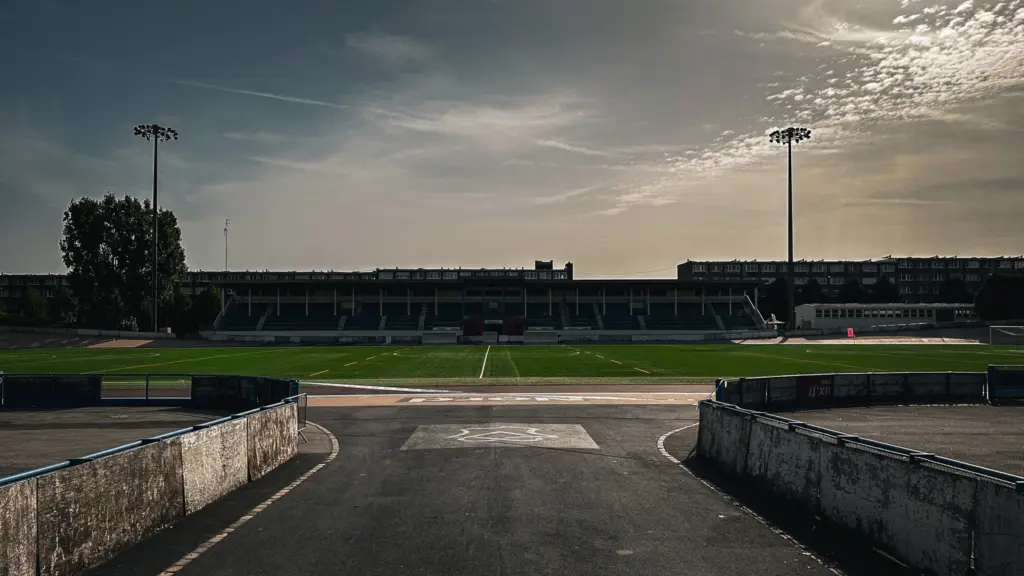
The magic of Roubaix
When I once started following cycling, a few moments were important. Of course, at the Kolsloot house, it was always about 'the Tour', with stories about Wim van Est, Wout Wagtmans, Gerrit Voorting and Jan Janssen being spoon-fed without any effort. This was reinforced by a visit to 'the 8 of Chaam' where I had myself immortalised with Wagtmans and Van Est. My father proud, me mostly bashful. On Sundays in spring, we were used to having the television on. We sometimes skipped the Omloop, but we certainly didn't skip 'de Ronde' and 'Paris-Roubaix'. The memories are very strong. I can still remember the supremacy of Mapei. I saw Andrei Tchmil win, Museeuw and especially I remember Servais Knaven's victory.
L'enfer du Nord
Perhaps even more than those victories, I remember the Forest of Wallers. When they got there, the voice of the commentators (De Neel and Smeets) always went up a little bit. They too knew what was going to happen. Especially in the 'wet' editions, it was invariably chaos here. Back then, no fences or other barriers but complete chaos on the cobbles. The hell of the North, as Paris-Roubaix is affectionately (not) called became visible here. Riders lying groaning in pain on the ground, frames in two, wheels in half. And always that cry for a new bike to keep going again. It was fascinating television.

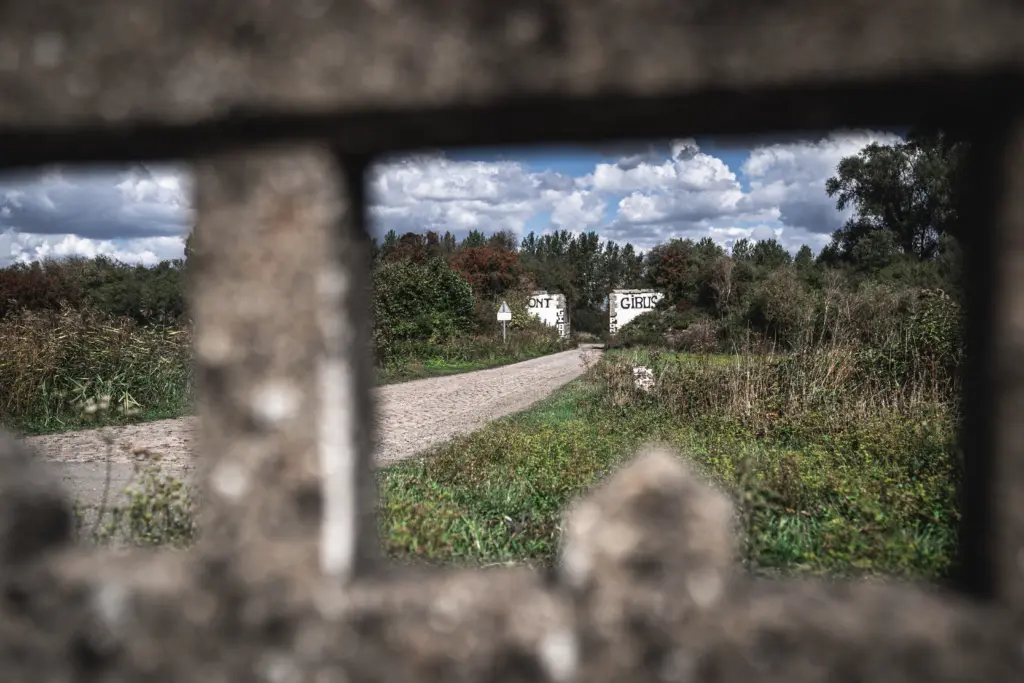
Finish on a piece of crumbling concrete
Once all the cobbled sections, such as Carrefour de l'Arbre and the strips at Mons-en-Pévèle were processed, the race invariably ended on a stretch of crumbling concrete. The velodrome André Pétrieux. On days with bad weather, the surroundings looked even more desolate than in real life, but turned the track into kind of open Thialf. So smooth and also full of cycling madmen screaming their favourite to the finish line. Invariably a lot of emotion with the winner. And often with a face of a miner. So black with dust and scarred by the day. It is an image that seems to fit the current city of Roubaix.
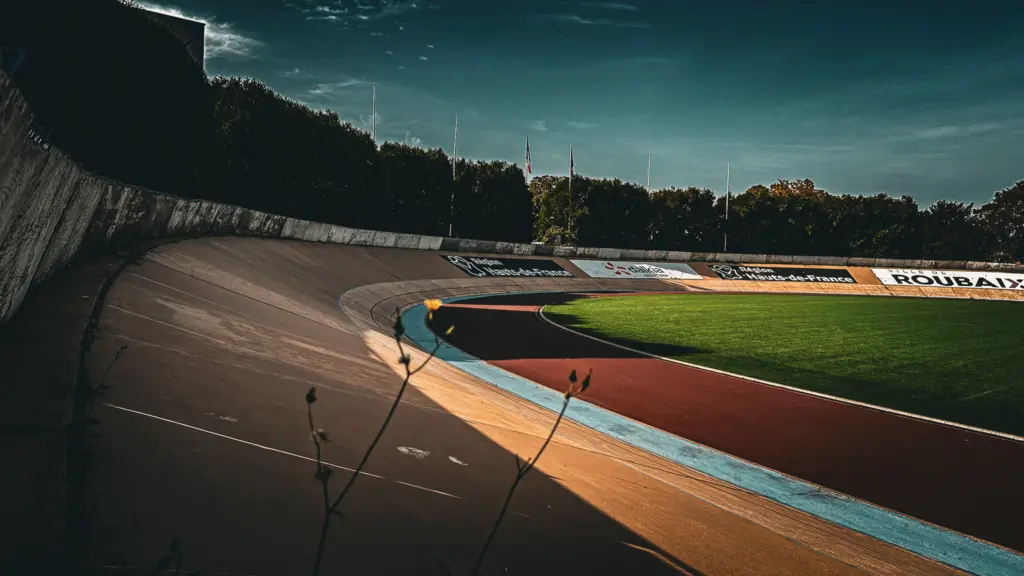
Poverty trumps
Roubaix has traditionally been a textile city. This is sometimes still reflected in the buildings that reflect its textile history. The decline of the industry (and the disappearance of production to low-wage countries) has caused the city to fall into decline. Together with Tourcoing and Lille, Roubaix forms a large metropolitan region of over 1 million inhabitants. Roubaix today is a city with massive unemployment and poverty. In 2020, the most recent figure I could find, 46% (!) lived below the poverty line. Tourcoing and Villeneuve d'Asq (a suburb of Lille where the football stadium of the local LOSC lies) are in the top five poorest villages/towns in France. That this translates to the surroundings and what you can find there, it can only be guessed.
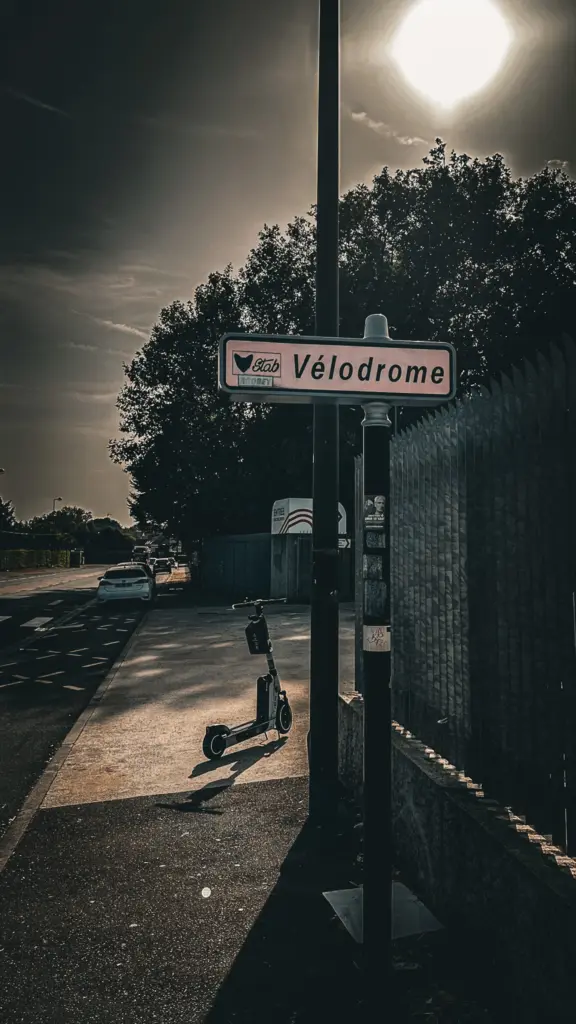
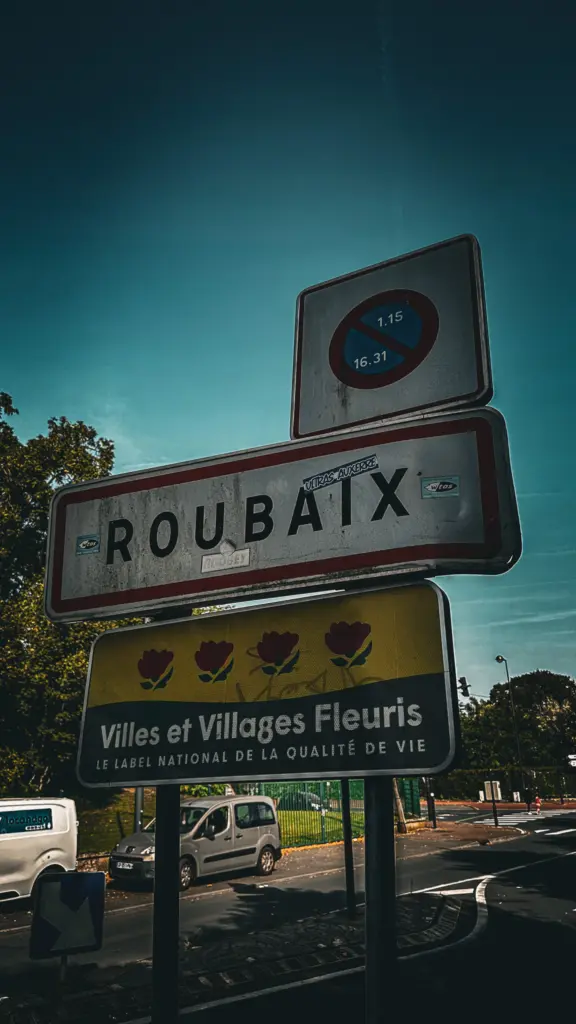
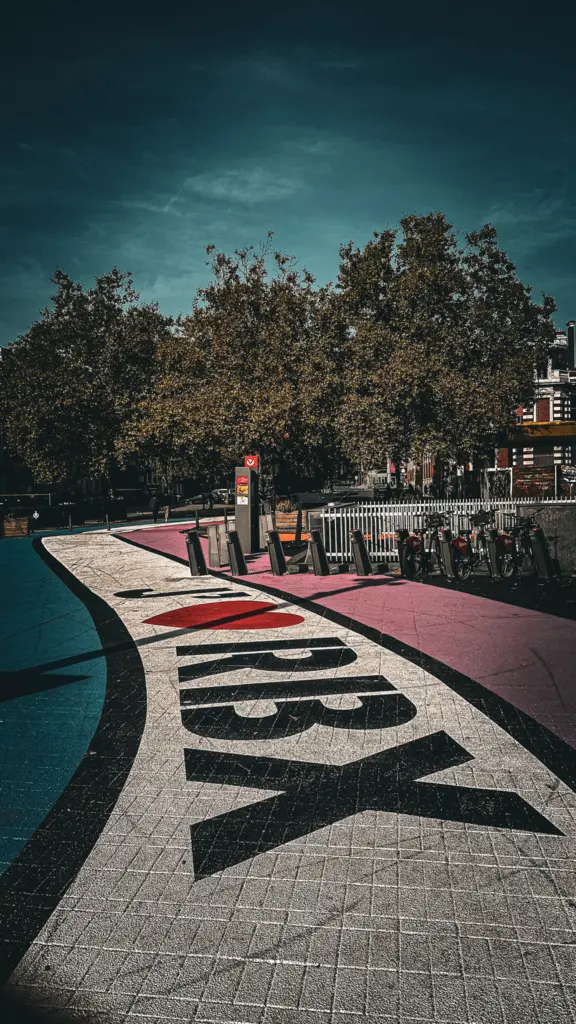
A pilgrimage trip
As we take the walk from the bus stop to the cycling track, a few hundred metres, we notice that this stretch of a few thousand square metres really breathes cycling history. A sign 'Ville de Velo' is a first hint. The large cobblestone at the entrance to the track betrays even more history. The ramp itself is closed. That's a setback. We take a photo through the gate and then decide to walk around. Real 'groundhoppers', a term from football, always look for an open gate or one you can just barely climb over.

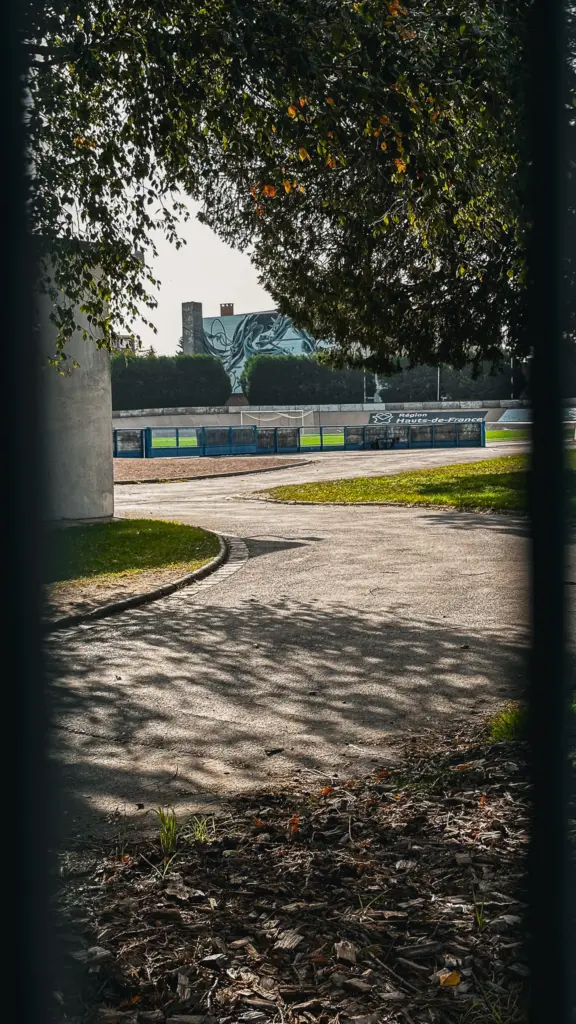
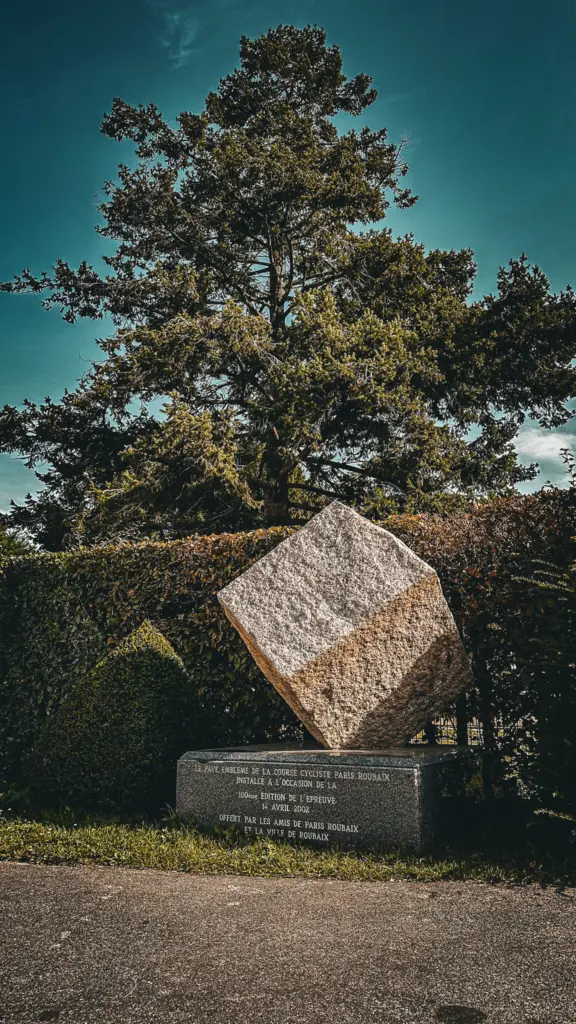
Tribune customers
Near the main stand, across the street, the murals are most striking. The heroes of the past and present are honoured, obviously with 'PouPou', Raymond Poulidor, but also with Bernard Hinault, with whom I had the opportunity to cycle recently. Extraordinary, beautiful and impressive. Here we are even more surprised by the open gate on the left. A friendly Frenchman is waiting for us. Can we still go in? 'Yes, you can, but you have ten minutes, because then we close'. As it turns out, the ladies of the local Roubaix football club are playing an important match against Wervicq-Caen. Today, the middle ground has been taken over by a piece of green plastic, otherwise known as a football pitch. We lovingly take the ten minutes and rush inside.
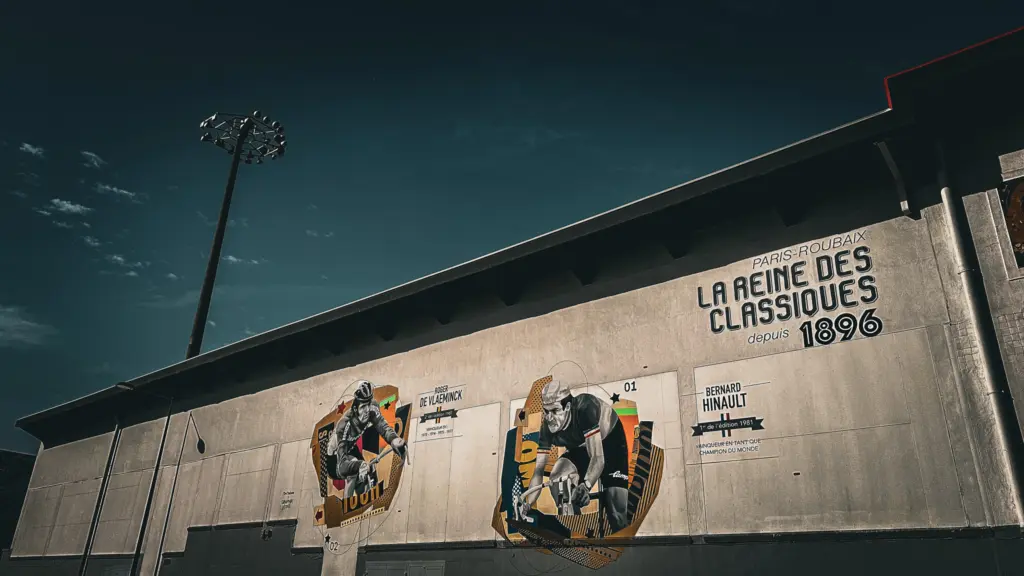
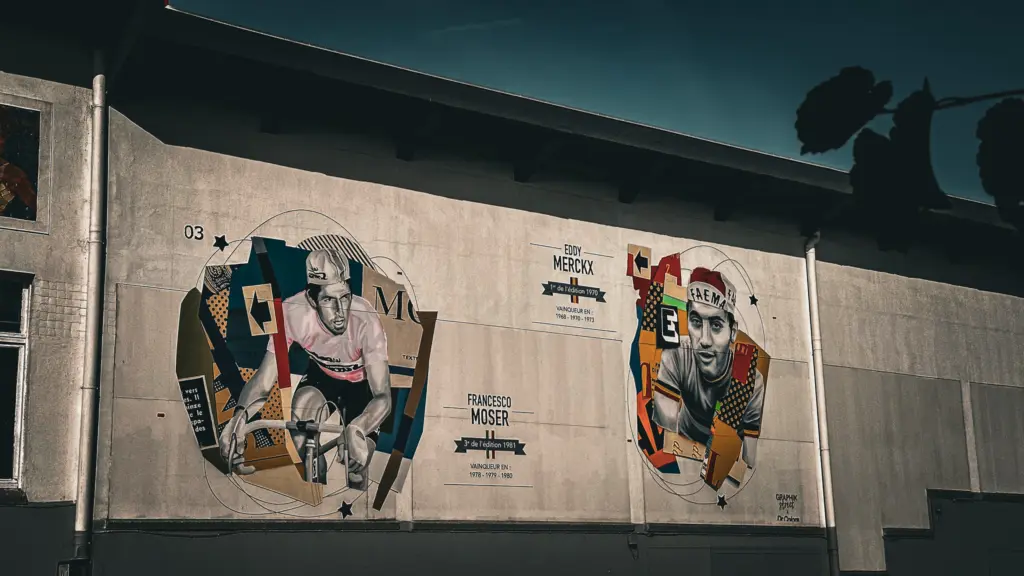
Old crap, new nostalgia
Once inside, we see up close the state of repair of the famous cycling track. Let's put it this way: it doesn't hold up. Now we see with our own eyes how bumpy it is. We see the dilapidated stand. UEFA is never going to give permission for a European match here. Most will know enough then. What does remain is the feeling that we are somewhere special. Here Mathieu van der Poel finished with his head on his helmet and Lizzy Deignan took a majestic victory in the first women's version of Roubaix. On this hallowed ground, so many dreams died, but also lives were changed for good. Mathew Hayman will never forget this place, as will Sonny Colbrelli. One of the many 'one hit wonders'.
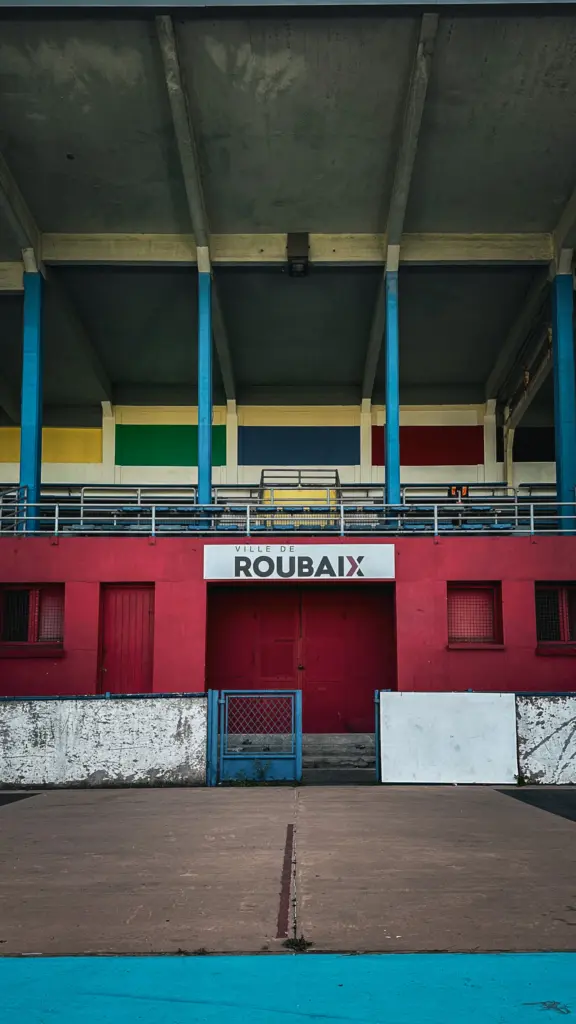


Happy boys
The famous showers remain closed to us. When we are ushered out after 10 minutes (the French know the rules: 10 minutes is 10 minutes), we look around a bit dazed. Richard and I look at each other and actually say at the same time: 'so, we've seen that after all!' It was well worth the metro, bus and walking trip. Like little boys with a big Lego box, we head back towards the city centre, to catch the metro back to Lille as quickly as possible. Because while the cycling track may be worth a visit, Roubaix itself remains a 'forgetable' place.
What you want to know about the Roubaix cycling track
- In principle, the cycling track is often open until two in the afternoon. So be sure to pay attention to the Roubaix ladies' game dates, as opening hours will differ.
- The adjoining cafe of the Velo Club de Roubaix is sometimes open. The club organises plenty of activities, such as Piste training, BMX and they also have a number of tours. The indoor cycling track next door is a better option for training, but love for the Velodrome Petrieux might prevail. Opening hours are unclear. But when they are open you will see the list of victors and more paraphernalia.
- The Paris-Roubaix race takes place by default on the second weekend of April, a week after the Tour of Flanders. The ladies cycle on Saturday, the men on Sunday. A fun weekend ride, where a spot along one of the pavés is a must.
- The cyclo or touring version of Paris-Roubaix, the Paris-Roubaix Challenge is usually run on the Saturday on the weekend after. in 2024, it will be on 13 April 2024.
